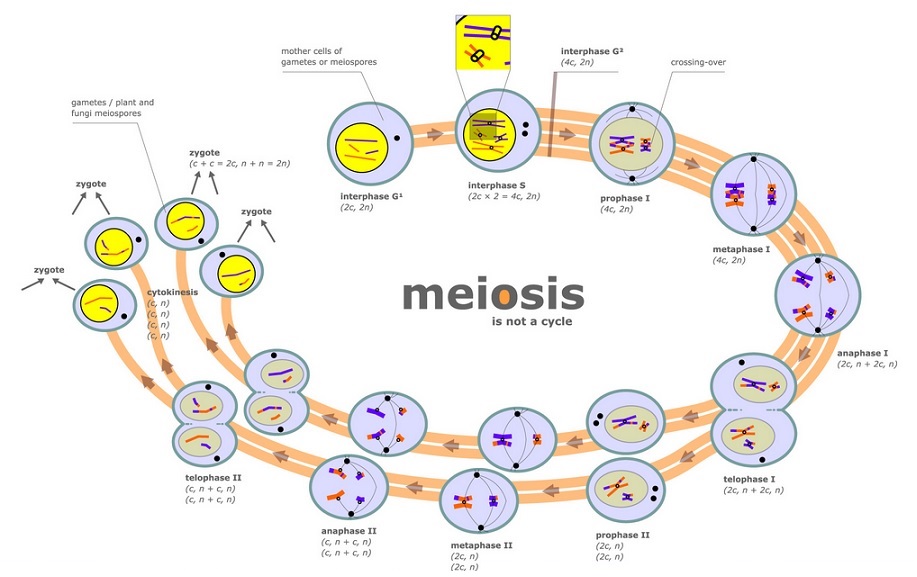Meiosis I:
- Prophase I: The DNA condenses and becomes visible as chromosomes. The nuclear envelope, just as in mitosis, disintegrates and the spindle fibers begin forming. Additionally, a unique process called crossing over occurs. In crossing over, homologous chromosomes line up with one another and exchange DNA. Thus, after crossing over the sister chromatids of a chromosome are not identical.
- Metaphase I: During this phase, the homologous chromosomes randomly line up along the equator. This process is known as independent assortment because since the chromosomes line up in a random fashion different combinations of the parent chromosomes end up in the final gamete. Then the spindle fibers attach to the chromosomes.
- Anaphase I: The chromosomes are pulled apart by the spindle microtubules to each end of the cell. Note: At this point, the chromosomes are still composed of two sister chromatids as they are pulled. In the end, two new cells (during telophase I) will be produced and then later in meiosis II, haploid cells will be made and will only contain one chromatid.
- Telophase I: Two new cells are created as the spindle fiber disappears and cytokinesis takes place. In comparison to the original cell, these new cells contain half the number of chromosomes.
Meiosis II:
Meiosis II is the second cell division consisting of prophase II, metaphase II, anaphase II and telophase II and is essentially identical to mitosis (please review the section on mitosis for these details on prophase II, metaphase II, anaphase II and telophase II since the mechanism is the same). After telophase II and cytokinesis, the result is four haploid cells which are all genetically different from each other. In comparison to the chromosome number present in the cells at the beginning of meiosis II, these cells have half the number of chromosomes.

Figure 1. This diagram presents an overview of meiosis, including interphase and then meiosis I and meiosis II. This diagram has been taken from http://commons.wikimedia.org/wiki/File:Meiosis_diagram.jpg.
© BrainMass Inc. brainmass.com July 26, 2024, 4:33 am ad1c9bdddf